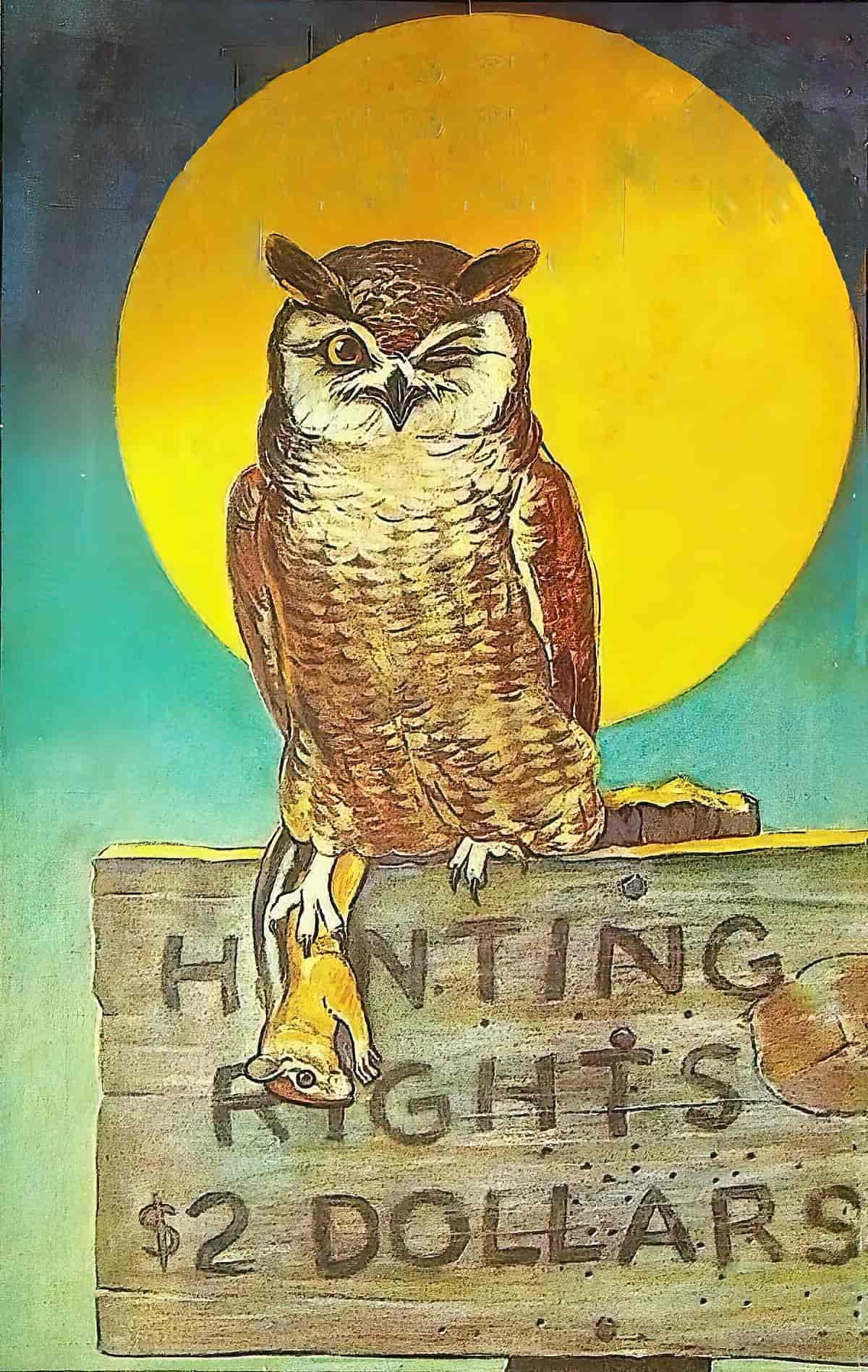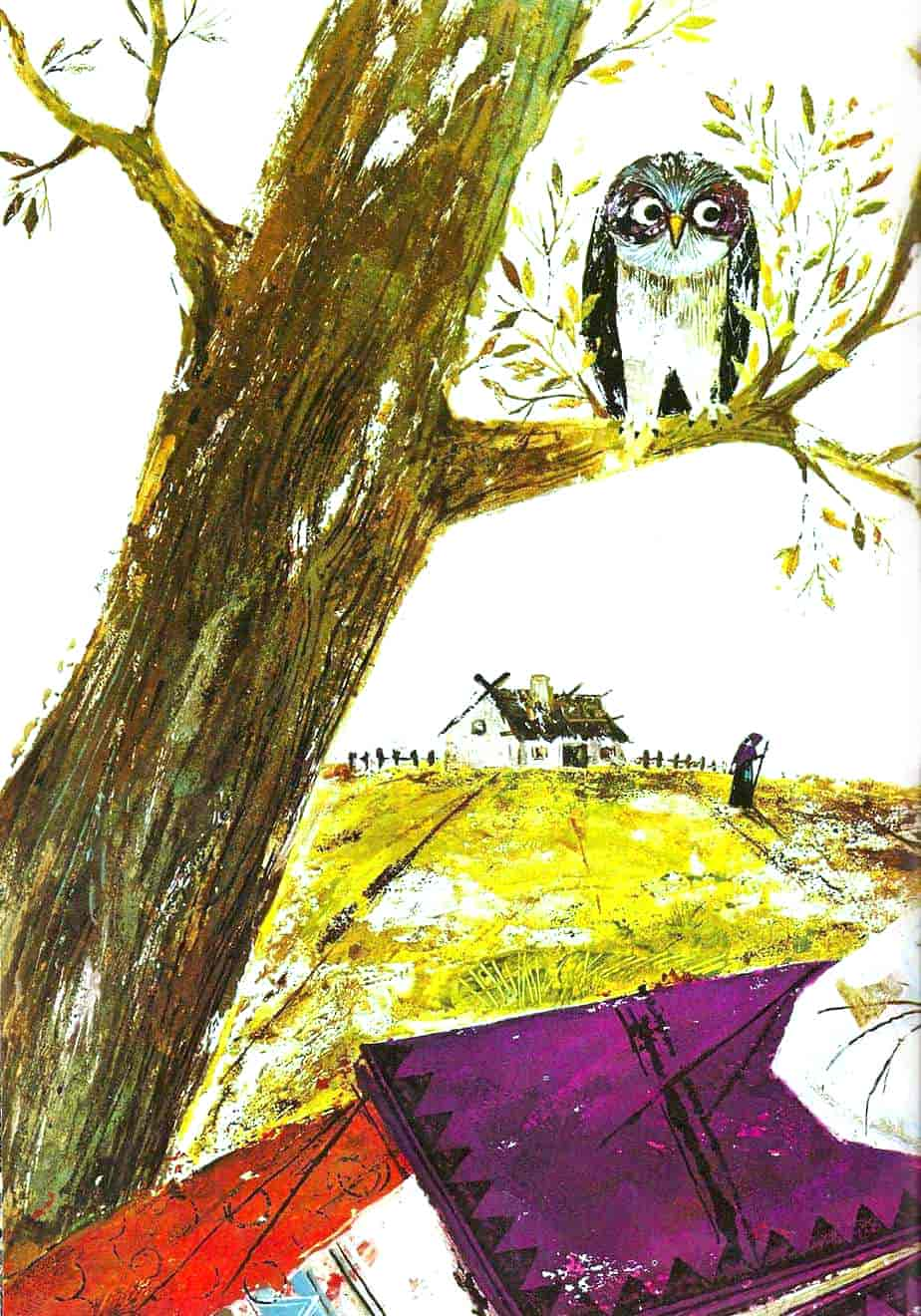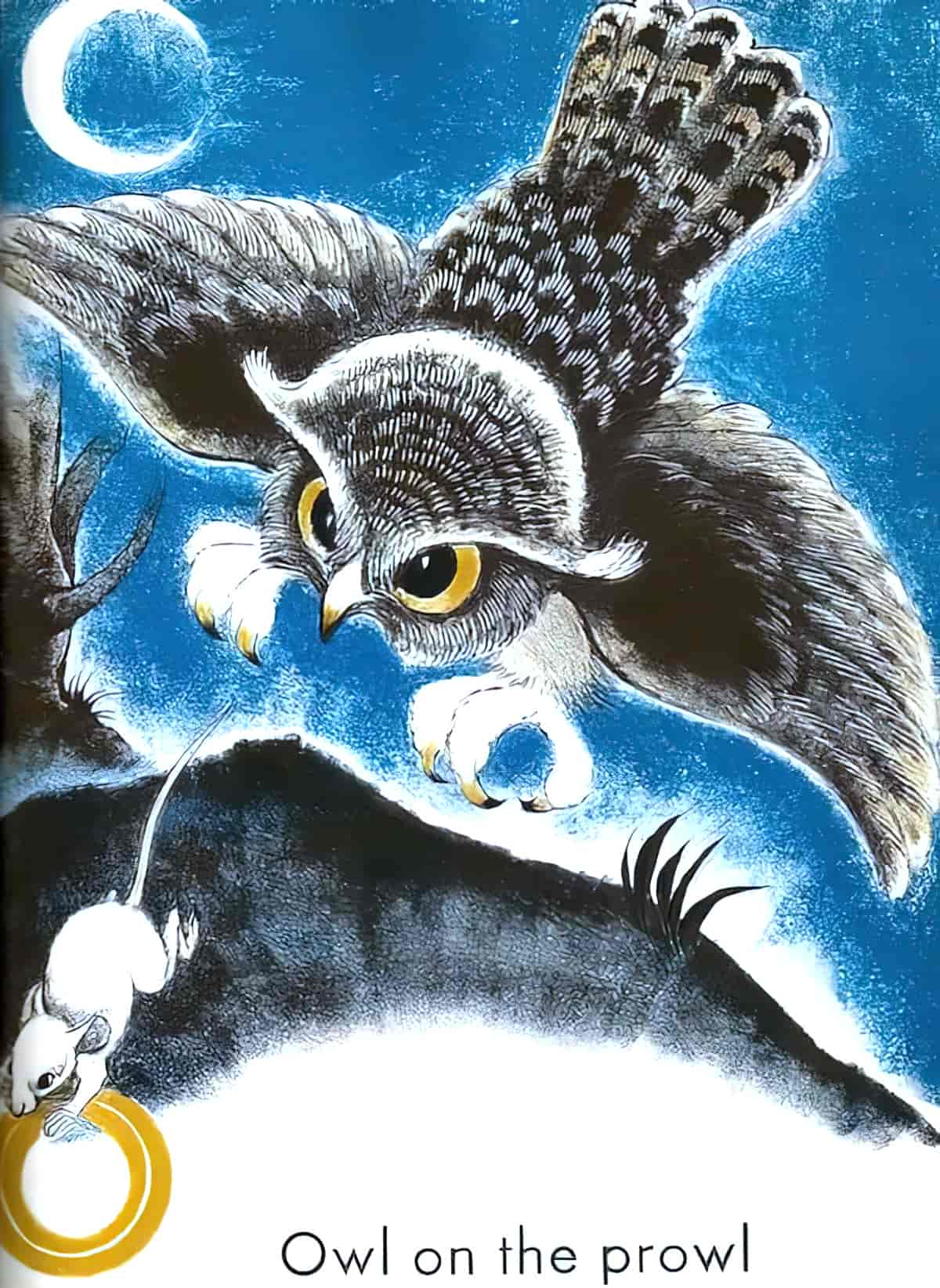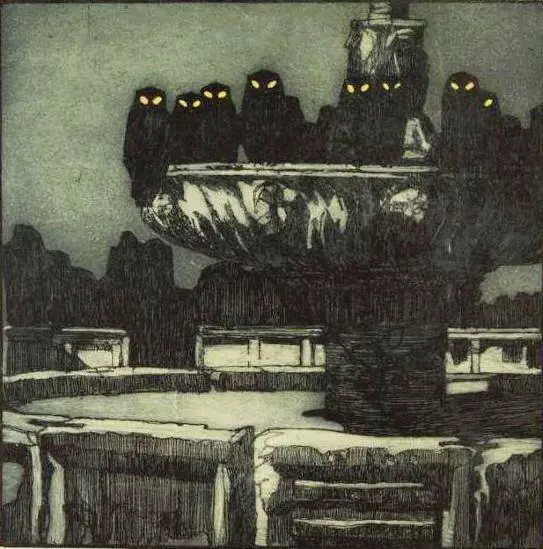“An Occurrence at Owl Creek Bridge” is a short story by Ambrose Bierce, first published in 1890 in “The San Francisco Examiner”. The story later became one of Bierce’s most famous works and is considered a classic of American literature.
Alongside Shirley Jackson’s “The Lottery” and Flannery O’Connor’s “A Good Man Is Hard To Find“, “An Occurrence at Owl Creek Bridge” is one of the three most anthologised American short stories, ever. This is one of the first short stories to use a “stream of conscience” narrative.
The story is out of copyright and freely available at Project Gutenberg.
TECHNIQUES OF NOTE
“An Occurrence at Owl Creek Bridge” is notable for:
- Its ‘twist ending’, which I describe as an example of literary side-shadowing. The story is the perfect length for a trick like that. Any longer it wouldn’t have sat right.
- The surprisingly cinematic descriptions, surprising because this short story was written before audiences were used to seeing stories on screen. The story starts with an establishing shot, as if taken by drone. Then we get high and low angles, an underwater action scene — if a modern film-maker used the story itself as a guide, the film adaptation would look modern. (For an early example of the same but in children’s picture books see Ferdinand’s Bull.)
- This story trusts its readers. We learn how the main character is tricked, and then we see him hanged. We fill in the gap ourselves.
- This story is not about moral dilemma. The character makes a (deadly) decision and this decision is automatic to him. Readers are not invited along for the ride. This is not about whether the main character acted morally or not. Instead, the author takes readers for a ride — along for an action-packed experience. What would it feel like to be executed for a crime?
- This short story plays with linear time. The whole thing is written in past tense until the final paragraph. In the water, time seems to slow down. The side-shadowing suggests that two outcomes may have happened in the same universe, as if the moment of near-death can split our fate into two. As the main character marches through the woods it takes all day, and the day symbolises an entire man’s lifetime. When his wife steps down to meet him it’s possible that, in one universe, she died before him.
COMPREHENSION QUESTIONS FOR “AN OCCURENCE AT OWL CREEK BRIDGE”
- When and where is this short story set? What time of day is it? What’s the weather like?
- During the American Civil War, what were the two warring sides known as? In basic terms, what were they fighting over? And how could you tell one side from the other by their clothing?
- Who is Peyton Peyton Farquhar and which side of the war is he on? What has he got to lose if his side loses?
- Readers are told that Peyton Farquhar has been tricked. Peyton Farquhar doesn’t know this himself yet, which puts the reader in audience superior position. How was he tricked?
- What does Peyton Farquhar plan to do to the bridge at Owl Creek?
- This story features a stand-out example of literary side-shadowing. What effect does the side-shadowing of Part Three have on the reader?

WHAT HAPPENS IN “AN OCCURRENCE AT OWL CREEK BRIDGE”?

THE STORY IN A NUTSHELL
During the American Civil War, a Southern farming gentleman and slave owner is about to be hung for planning to set fire to a railroad, hampering Federal advancement. He was tricked by a Northern spy. Now Peyton Peyton Farquhar is about to be hung from a railway bridge trestle.
ANALYSIS
PART ONE
As the story opens, it is an early, misty, golden morning in Northern Alabama. A man on a bridge is about to be hung. His executioners are two private soldiers of the Federal army. Overseeing them, a sergeant. Another officer stands nearby, plus another two officers at each end of the bridge.
Other than that, this part of Alabama is deserted. At least, it seems that way, except the war is going on all around them, and there’s a line of infantry midway up the slope between this bridge and the nearest fort.
The victim of the hanging is about 35 years old and described as handsome, with emphasis on phrenology of the era. (His ‘broad forehead’ would ordinarily be considered a sign of intelligence.) His ‘well-fitting frock coat’ tells us he’s had his clothing tailored. Also, he looks kind, so readers of the day assume he is kind. This is not your run-of-the-mill ‘vulgar assassin’. He’s got some money behind him. He’s a ‘gentleman’.
A death-knell rings. The hanging victim considers jumping into the water below, if only he could free his hands. He thinks of his wife and children.
PART TWO
Now we learn the guy’s name is Peyton Farquhar. He has inherited a plantation and owns slaves. Such men, we are told, are automatically politicians. He is ‘naturally’ a secessionist.
WHAT IS A SECESSIONIST?
Secessionists are people who want their region or group to become separate from the country or larger group to which it belongs. In the context of the American civil war (1861-1865), secessionists supported the secession of Southern states from the Union, leading to the formation of the Confederate States of America. The American Civil War was primarily driven by the secession of 11 Southern states that believed they had the right to leave the United States and establish their own independent nation based on principles that included the preservation of slavery as a cornerstone of their society.
Secessionists in the Southern states argued that they had the right to secede from the Union due to the concept of states’ rights, asserting that the federal government should have limited authority over the individual states. The issue of states’ rights, with slavery as a key underlying issue, played a central role in the tensions that ultimately led to the Civil War.
On the other side, the United States government, under President Abraham Lincoln, maintained that secession was unconstitutional, the Union indivisible. The Civil War was fought to preserve the Union and ultimately to abolish slavery in the Confederate states, although the emancipation of enslaved people became a more prominent goal as the war progressed.
The conflict between secessionists and those who sought to preserve the Union resulted in a brutal and devastating war, with significant consequences for the nation, including the abolition of slavery and the reunification of the United States.
For reasons the narrator doesn’t go into, Peyton Farquhar hasn’t become a soldier, but has devoted himself to war efforts at every opportunity, believing that war glory comes to all, eventually.
PEYTON Peyton Farquhar’S NAME
I don’t know how other contemporary readers feel about the name Peyton Farquhar, but I am reminded of Mitt Romney’s secret (subsequently exposed) Twitter handle, Pierre Delecto — a name treated as ludicrous by commentators. Both names have something of the pompous about them. These are names a man night give himself if he were a low mimetic hero but considered himself a romantic hero (to use Northrop Frye’s terminology). This is probably why the creators of the Shrek stories feature the similar sounding Lord Farquaad as the name of an unlikeable, pompous character. Lord Farquaad is not of royal stock but wants to be. He has ideas ‘above his station’. We are encouraged to despise him for this. (An interesting ideology if you think about it — why do we champion the aspirations of the youngest son in Puss in Boots but not the aspirations of Lord Farquaad?)
The following Sparks Notes paragraph does an excellent job of summarising how the psychological shortcoming of Peyton Farquhar in “An Occurrence At Owl Creek Bridge” ties in perfectly with the ending (‘his fate’):
The fantasized escape that runs counter to the actual execution in the story mirrors the gap between who Farquhar actually is and who he would like to be. In his world of illusion, he is able to outwit his captors and make it back to the family fold—whereas the reality of his situation is much more grim. Farquhar’s overindulgence of fantasy in both his image of himself and his reimagining of his fate ultimately undoes him. He cannot realize his desires in the real world, and at the end of his life, he is prey to the same delusions and misinterpretations that led him to the gallows to begin with.
Sparks Notes
One evening, while Peyton Peyton Farquhar is sitting with his wife on a bench at his plantation, a ‘grey-clad’ soldier turns up and asked for a drink of water.
THE MEANING OF GREY-CLAD SOLDIER
The Confederate States Army wore grey uniforms. (“Greybacks”.) This side represented the Southern secessionists. The army had difficulty obtaining fabric and other supplies for the war, so they used whatever greyish material they could get their hands on. There was no uniform style — any sort of grey uniform would indicate a Greyback soldier.
Union soldiers typically wore blue uniforms which were more fancy and uniform. (“Yankees”, “Yanks” or “blue-coats”.)
Peyton Farquhar’s wife passes the soldier a glass of water ‘with her own white hands’ (meaning she doesn’t ask a slave to do it.) Peyton Farquhar takes the opportunity to ask for news from the front.
During wars, sabotage of railroads, especially of railroad bridges, is an effective way to hinder the opposition, as railroads are vital in supplying weaponry and living needs to soldiers at the front. So when the Greyback soldier tells Peyton Farquhar that the Yanks are repairing the railroads and getting ready for another advance, Peyton Farquhar understands the advancing peril. The enemy are already at Owl Creek Bridge.
The commander on the other side has put it about that anyone caught interfering with railroads, bridges, tunnels or trains will be automatically hanged.
This doesn’t deter Peyton Farquhar. He’s got a wife and family to think about, not to mention is livelihood, built on slave labour, leaving him free to spend evenings sitting around on benches with his wife.
“How far is it to Owl Creek Bridge?” he asks. Thirty miles.
Peyton Farquhar asks for further details, and the grey-clad soldier admits the bridge would be easy to burn down given an accumulation of dry driftwood which has accumulated there since last winter.
The narrator finishes this section on a cliff-hanger, informing readers that this was not a Greyback soldier after all. There’s a reason why the narrator said ‘grey-clad’ and not ‘Greyback’. This was a scout sent out by the Federal side. Peyton Farquhar has been set up. The enemy was wearing grey clothing as a simple, easily replicable disguise.

PART THREE
Back to the bridge scene. Part Three opens with the hanging of Peyton Peyton Farquhar. However, he does not die immediately. He has time to suffer as he thrashes about at the end of the rope in significant pain.
Then the rope snaps and he finds himself in the water. The cold brings him back to his senses, but he still has the tight noose around his neck. He sinks deeper and deeper, but manages to break free of the cord, not too worried by this time how he will die, so long as he’s not shot. That would be humiliating.
Survival instincts kick in despite himself, and he makes it to the surface. Everything in nature looks different now. He sees the world at a macro level, appreciating every insect, every leaf.
Up on the bridge, the soldiers are prancing around and shouting. The captain tries to shoot him but misses.
Peyton remembers the shooter has grey eyes. In those days it was common wisdom that people with grey eyes have the best aim. This idea continued into the 20th century. More recent research has shown that each eye colour confers its own minor advantages.
Still, the grey-eyed shooter has missed.
By this point, you’ve probably forgotten about the line of soldiers nearby, briefly mentioned at the start of the story. Well, now we remember. One of them calls out. Peyton Farquhar is no soldier himself, but he knows that cry when he hears it. “Aim… Fire!”
Peyton Peyton Farquhar dives back into the water but he gets shot in the collar and neck. When he re-emerges from the water, he’s further downstream, which is good. But can he avoid getting shot by the guy on the bridge?
He makes it to the bank. The gravel looks like diamonds now. He makes his way through the forest, which is far larger than he had imagined a local forest could be. He never realised he lived so close to such wilderness.
Night falls. Spurred on by thoughts of his family, he finds a familiar but uncanny road. ‘It seemed untraveled’. There are no fields, no buildings, just ‘black bodies’ of trees forming a straight wall on each side. He’s still in a kind of forest. When he looks up, the constellations of stars are unfamiliar to him. Everything feels meaningful.
He hears whispers in an unknown language. Eventually he sees his wife stepping down from the house, joyous to see him.
Then he feels a blow to the head.
THE TWIST ENDING
None of Second Three actually happened. As Peyton Peyton Farquhar flailed around at the end of the rope, he simply imagined falling into the water, fighting for his life, making it to the bank and stumbling through the uncanny forest.
Now he is dead, simply from hanging.
“AN OCCURRENCE AT OWL CREEK BRIDGE” AS O.G. EXAMPLE OF LITERARY SIDE-SHADOWING
In literature, side-shadowing is a technique that involves briefly diverting from the main narrative to explore a side story or subplot that is related to the main plot but not essential to it. This technique is often used to provide additional context, develop secondary characters, or offer a different perspective on the main story’s themes.
For more on that: Foreshadowing, Side-shadowing and Backshadowing in Literature.

The question is why? Why did Ambrose Bierce not finish the short story at the end of Part Two?
REASONS FOR the trick ending
It’s disturbing to ‘see’ Peyton Peyton Farquhar hanging and thrashing about, unconscious but not quite dead yet. No matter the crime, slow and painful deaths traumatise. The side-shadowing of “An Occurrence at Owl-Creek Bridge” lets readers imagine that the thrashing around isn’t so bad after all, because in the victim’s mind, he’s elsewhere.
People also like the idea of remorse. This is baked into our court systems. If a perpetrator demonstrates remorse, this lightens a sentence. Should remorse come into sentencing decisions, to the extent that it does? There are a few problems with it, and I don’t believe court rulings reflect the complexities of ‘remorse’. Namely, ‘demonstration of remorse’ is an act, and not every person on trial is readily legible to others. Judges and juries can’t be trusted to find the emotions of neurodivergent perpetrators legible, for instance. By extending the story beyond the moment of hanging, Peyton is given time to feel remorse. Except he doesn’t.
Or does he? What do you think? In storytelling, whenever characters are thrown into water, this tends to symbolise some kind of baptism and rebirth. When Peyton emerges from his ‘baptism by fire’, he doesn’t think, ‘Well, I shouldn’t have done that, then.’ Instead, he just continues trying to make his way back home, where he would no doubt continue believing the same as he did before, only with firmer resolve, no doubt.
In Section Three readers do get to know the guy a bit better. We learn the importance of his family. We get to empathise with him. But should we? To what extent? Who is missing from this story? Other people deserve our sympathies.
THE OPPOSITIONAL GAZE
What do owls have to do with this story? Anything? Anything? Bueller?
The owl is simply the name of the bridge, dummy. Yeah but, no but, the author made up the name of the bridge. Even if this is a real bridge (and I don’t care either way), Ambrose Bierce could have named this bridge anything at all.
What do we associate most with owls? Maybe camouflage.

The camouflage aspect of owls is noteworthy, but for me it’s also their eyes. Owls have remarkable eyes, and because they have an exceptionally wide field of view, they can see far better than we can. There’s no getting away from an owl if an owl has you in its sights.

But what does eyesight have to do with “An Occurrence at Owl Creek Bridge?”
I don’t think it’s about how the guards have Peyton Peyton Farquhar in their sights from the get-go and set about killing him after setting him up for that sabotage.
When the spy encounters Peyton Farquhar and his wife, the couple are sitting on a bench.
One evening while Peyton Farquhar and his wife were sitting on a rustic bench near the entrance to his grounds, a gray-clad soldier rode up to the gate and asked for a drink of water.
“An Occurrence at Owl Creek Bridge”
What does one do when sitting on a bench? Well, one looks about. The Peyton Farquhars, as white colonists, are surveilling their property. Not on the page: They surveil their human property. Peyton Farquhar is the owl.
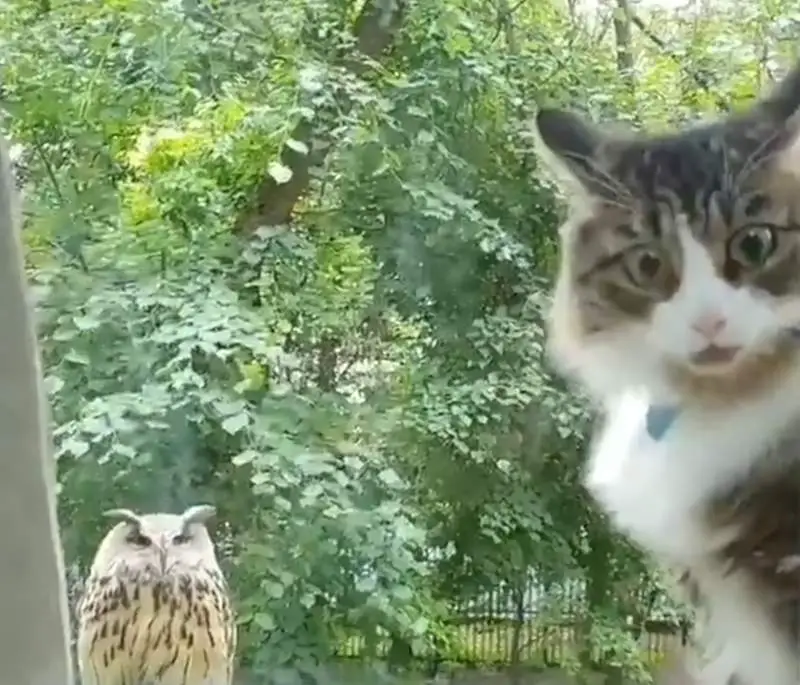
Black feminist bell hooks (who recently died) wrote in 1992 about the “oppositional gaze”, which describes an act of rebellion in which a Black person stares back at an enslaver. Because slaves were not allowed to look at their owners, to simply look at them was a charged act.
THE AMERICAN CIVIL WAR IN A NUTSHELL
Reason For America’s Civil War
The primary reason for the south seceding from the Union was to protect the right to own slaves.
The primary interest of the north was to maintain the United States as a single, undivided country.
Basic Facts of The Civil War
- The Civil War lasted 1861-1865.
- In 1861, the American states were united, in what was called (and is called again today) ‘the united states’. They had united in 1789 and formed a common government using ‘the constitution’ as the common agreed-upon thing by which to live a good life.
- In November the year before, Abraham Lincoln started a radical idea. He said that America couldn’t thrive on slavery. People who agreed with him were called ‘abolitionists’. People who supported the Confederacy were known as secessionist, or ‘secesh’ for short.
- Johnny Reb or Johnny Rebel is the national personification of the Southern states of the United States, or less generally, the Confederacy during the American Civil War. Patriots used Johnny Reb and his Union counterpart Billy Yank to symbolize the common soldiers in the American Civil War of the 1860s.
- Billy Yank or Billy Yankee is the personification of the Northern states of the United States, or less generally, the Union during the American Civil War. The latter part of his name is derived from Yankee, a slang term for New Englanders.
- Slavery was concentrated (but not limited to) the Southern states, where black people were used as free labour. They were used as farm labourers and were the backbone of the southern economy.
- Lincoln was elected the first Republican president, with 40 per cent of the popular vote.
- Abraham Lincoln grew up in a log cabin in Kentucky. He started out as a shop keeper, then he was a lawyer, then moved into politics.
- Abraham Lincoln really did not want to break up the United States.
- 7 Southern states decided they didn’t want to be part of the United States anymore. South Carolina was first to secede from the Union. Over the next two months Mississippi, Florida, Alabama, Georgia, Louisiana and Texas followed suit.
- The new boss of the so-called ‘Confederate States of America’ was a guy called Jefferson Davis. He’d been in the army. They called him their president.
- Lincoln refused to recognise the Southern states as an independent nation.
- The Civil War officially started a month after Abraham Lincoln was sworn in, at 4:30 am in Fort Sumter, Charleston, South Carolina. They did this because there were still a few southern forts manned by northern United States soldiers. Fort Sumter was one such fort. The confederacy wanted them gone from their turf. Abraham Lincoln refused. Instead, he resupplied them by sea. This battle lasted 34 hours and in the end the Fort Sumter soldiers surrendered.
- Three days later Abraham Lincoln called for 75,000 militiamen. He put a guy called Robert E. Lee in charge. This army was called the Union Army.
- Now Virginia, Arkansas, Tennessee and North Carolina also secede from the Union. This makes an 11 state Confederacy.
- To deal with this, President Lincoln stops supplies from getting to the rural South.
- Robert E. Lee is conflicted. He’s actually from the South himself. He goes to Virginia and accepts command of the naval forces there. He remains one of the most famous turncoats.
- The first big battle of the Civil War was The Battle Of Bull Run.
- Boys as young as 15 were fighting. They lied about their age and were accepted nonetheless.
- In 1863 Lincoln issued the Emancipation Proclamation which freed the slaves in the Southern states.
- In 1864 Lincoln narrowly won re-election. A lot of voters wanted to sign a peace treaty with the southern states.
- In 1865 the United States defeated the Confederate States and abolished slavery nation-wide. This is because there were simply a lot more people living in the north. The United States still has 22 million people while there were only 9 million people in the south, and 4 million of those were slaves. The north also had more money, more factories, horses, railroads and food.
- Over the course of four years, more than 620,000 men had died — the biggest death count of any war in American history.
- On April 14 1865 Lincoln was assassinated by John Wilkes Booth.
What Happened To The Slaves During This Time?
Did some slaves fight against the north, siding with their captors? During the war Lincoln freed some slaves and allowed freedmen to join the Union Army.
What happened to slaves who tried to run away to states where slavery was now illegal? Did abolitionists help them? Before Fort Sumter, escaped slaves were likely to be sold back South.
Did soldiers from the south march north, invading abolitionist states, or were they mainly on the defensive?
They fought defensively. They were surprisingly skilled fighters, and despite their much lower numbers were a force to be reckoned with.
When the south won back Robert E. Lee, Lee launched a daring invasion in the summer of 1863. They were defeated (the Union General was now a guy called George G. Meade), but it left 52,000 men dead, wounded or MIA.
This battle is thought to mark a ‘turning point’ — the point where the south began to lose. After this battle Abraham Lincoln made a famous speech called The Gettysburg Address. He said that he really wanted to preserve the union and how important it was.
Where was the most dangerous place to be during this time if you were an abolitionist? On the southern borders?
The bloodiest battle was The Battle of Gettysburg in Pennsylvania, with the 52,000. Gettysburg was a little up-and-coming town of just 2000 people. It had 3 newspapers and two institutes of higher learning.
Although the Battle of Gettysburg was the ‘costliest’ battle, it wasn’t technically the ‘largest’. There were more actual troops fighting at Fredericksburg.
The Reconstruction Era
The confederate states weren’t just accepted back kindly into the United States. That whole messy process took 20 years and is known as the Reconstruction Era.
The south was left in tatters. The war had wiped out basically an entire generation of men. Farmers were bankrupted. Its roads, factories and roads were in ruins.
During this time the constitution was amended to assure ‘equal protection under the law’. This is known as the 14th amendment, and people are still fighting for equal treatment today.
In 1870 black men won the right to vote. This is known as the 15th amendment. In practice though, there were still many barriers to black men voting. (Women all over America didn’t achieve universal suffrage until 1920 — this was known as the 19th amendment. A few forward-thinking states had started to allow women voting in the 1910s.)
Today
People known as The Civil War Trust don’t like that former battle fields are being developed into malls and whatnot, so try to stop that happening. It was a group started by veterans.
Within Southern American English, “Yankee” is a derisive term used to refer to any and all Northerners, or those from the regions of the Union side of the American Civil War.
The Civil War in Children’s Literature
One of my favourite stories is The River Between Us by Richard Peck, set in a small town on the Missouri side of the Mississippi River. A teenage boy about to live through the first world war goes to visit his father’s natal family and hears the family history, intertwined with history as it happened for poor, regular folk during the Civil War.
FOR FURTHER INVESTIGATION
In this episode, we discuss “An Occurrence at Owl Creek Bridge” by Ambrose Bierce. What can we learn from a story with such a devastating twist? How can we create an engaging story out of a cheap trick that we’re usually advised to avoid? What’s a good length for a story? Is this a story? Does fiction need to be a story?
Why Is This Good? podcast
OWLS IN ART AND ILLUSTRATION
Since this story did not, despite the label on the tin, feature a single owl, here are some owls.



